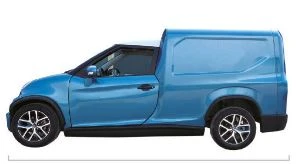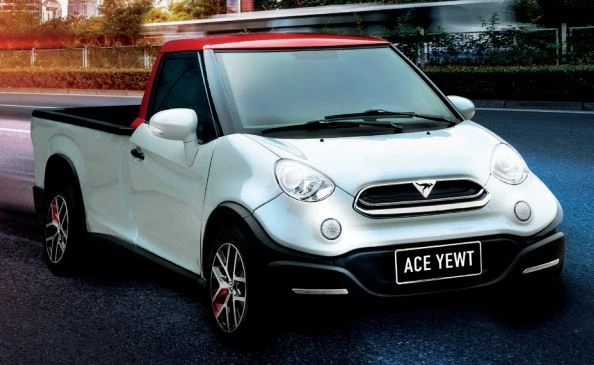The EV From Down Under
 We were all very sad when we got the news that those iconic Australian cars – Ford and Holden – were no longer going to be manufactured here and that the factories were closing their doors. However, we can all smile again for the sake of the Australian automotive industry: a new company in Queensland is going to manufacture a car from scratch. Great!
We were all very sad when we got the news that those iconic Australian cars – Ford and Holden – were no longer going to be manufactured here and that the factories were closing their doors. However, we can all smile again for the sake of the Australian automotive industry: a new company in Queensland is going to manufacture a car from scratch. Great!
There’s a slight difference with this newcomer, though. Unlike the gas-guzzling Ford Falcons and Holden Commodores (OK, they were a bit better when driven on the open road but that’s another story altogether), this new company, ACE EV, is turning its eyes to the hot new sector of the automotive industry: electric cars.
Well, to be more specific, it’s going in for electric vans and commercial vehicles as well as cars. And, to be fair, the factory is going to be using some parts that were manufactured overseas as well as a few made here. The idea is to keep the costs down. They’re not out to produce Tesla clones at Tesla prices. Not that there’s anything wrong with Tesla per se and it’s neat to see electric vehicles that have bust out of the boring, crunchy-granola, wimpy image and become supercool. However, a brand new Tesla probably costs more than what I paid for my house. ACE EV, however, wants to make EVs more affordable for the typical tradie or suburban family.
ACE EV stands for “Australian Clean Energy Electric Vehicles”. Proudly Australian, their logo features a kangaroo on the move. This year (2019), they are launching three vehicles, targeting tradies as well as your typical urban motorist, although they’re only selling them to companies as fleet vehicles at this stage. These are the ACE Cargo, the ACE Yewt and the ACE Urban.

ACE Cargo
The Cargo is designed to, um, carry cargo. It’s a van that’s capable of carrying a payload of 500 kg and has a range of 200 km if it’s not carrying the full load. The Cargo is designed to be suitable for couriers and anybody who has to carry gear or people from one side of town to the other: florists, caterers, cleaners, nurses and the people who carry blood samples from the medical centre to the lab for analysis. Looks-wise, it’s broken out of the square box mould of traditional vans, probably for aerodynamic reasons, and resembles a single-cab ute with a hefty canopy.

Ace Yewt
Which brings us neatly to the Yewt. The Yewt is what it sounds like (say Yewt out loud if you haven’t got it yet). It’s a flat-deck single-cab ute and as it’s got more or less the same specs as the Cargo regarding load, charge time and acceleration. You’d be forgiven for thinking that t it’s the same thing as the Cargo but with the cover on the cargo area taken off. It’s something of a cute ute – and the contrasting colour roof is a nice touch.

Last but not least, there’s the Urban, which is no relation to the Mitsubishi with the notoriously weird name (Active Urban Sandal). This one’s still in the pipeline and they haven’t given us the full specs brochure yet (it’s due for release later this year), but this is a classic four-seater compact three-door hatch that looks a bit like a classic Mini but edgier.
It’s certainly nice to see some new vehicles made in Australia for Australians, especially given that in a recent poll, about half of all Australians in an official survey by the Australia Institute would support a law that all new cars sold after 2025 should be EVs. However, let’s not rush things too much yet. For one thing, EVs are only one of the Big Three when it comes sustainable motoring (biofuels and hydrogen are the others). The other thing is that all energy has to come from somewhere, even electricity, as stated by the First Law of Thermodynamics. This means that in order to charge your EV, you’re going to have to generate the electricity somehow and get it to the charging points. Before we go over lock, stock and barrel to EVs, we will need better infrastructure, and I don’t just mean more EV charging points around town and in our homes. We’ll need some more generators. Otherwise, it would be like setting up a bowser but having no petrol to put in it. If everybody were to try charging their EVs at home overnight, there would be a massive drain on the national grid and we’d be getting brownouts and blackouts all over the show –which means that watching TV, catching up on your emails, having a hot shower and cooking dinner would get rather difficult – and you wouldn’t be able to charge your EV either. Guess where the power companies will have to get the money from in order to build new power plants – that’s right: your power bill.
May I humbly suggest that before you invest in an EV for your commute that you also consider installing a solar panel or three on your home? Or a wind generator? Not one of those petrol or diesel-powered generators – swapping an internal combustion engine in your car for one in the back yard isn’t better for the environment now, is it? Unless you run it on biofuel or hydrogen.
David George says:
I cant see how theyd be competitive in terms of features, performance, NVH etc. For a start I cant imagine that this company has that much in the way of capitalisation and simple economies of scale will make it harder to do as much testing, R&D, etc as major manufacturers and sell a comparable product as cheaply as established car makers. I wish them well, but…
April 23rd, 2019 at 11:07 am
Bruce Grime says:
an interesting article. looking forward to hearing more as this develops. a small about town car is definitely of interest if it comes at the right price.
April 23rd, 2019 at 11:23 am